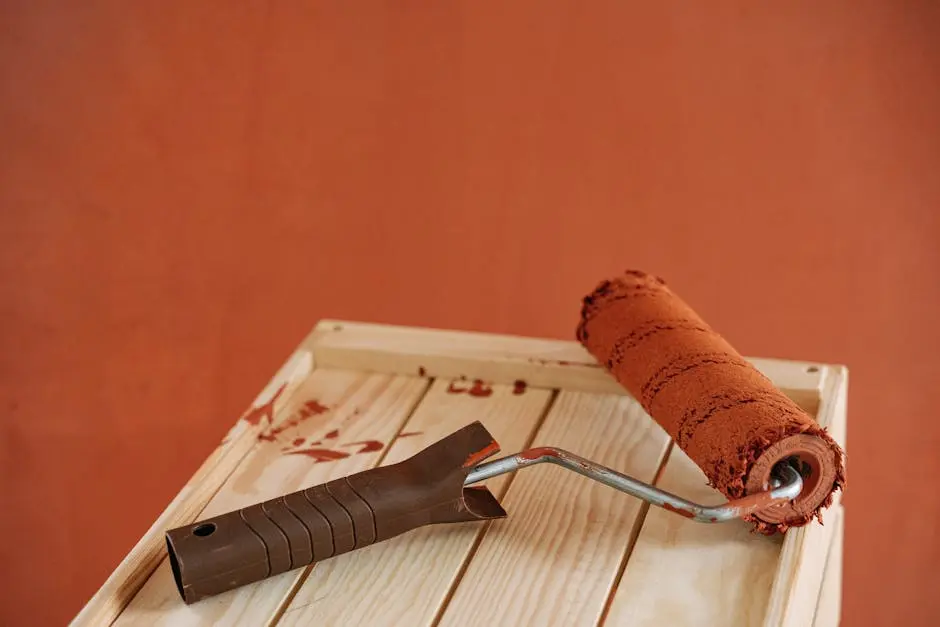Painting your walls not only enhances their beauty but also offers crucial protection against the elements. In a world where weather conditions can be unpredictable, mastering the art of weatherproof painting is essential. Let’s dive into fifteen effective techniques to make your walls resilient and long-lasting.
1. Understanding the Importance of Surface Preparation
Before applying any paint, it’s crucial to prepare the surface properly. Cleaning and repairing any damage ensures the paint adheres well and lasts longer. Begin by scraping off old, flaky paint, sanding rough patches until smooth, and using a quality detergent or a pressure washer to eliminate dirt, mold, and grease. Doing so will reveal any hidden imperfections that may need addressing.
Understanding how weather impacts unprimed surfaces is insightful. Surfaces that are not properly treated tend to absorb moisture, leading to toxins that weaken the paint’s hold. This means all that time and money spent could be wasted if proper surface preparation isn’t adhered to. An informed decision will produce not only longevity but also cost savings in the long run.
2. Choosing the Right Primer for Weather Resistance
A high-quality primer creates a perfect base for your paint and enhances its weatherproof capabilities. This layer serves as a shield against moisture and changing temperatures. When selecting a primer, ensure it complements the type of paint you’ll be using, be it oil or water-based. Epoxy primers, for example, are excellent for outdoor use due to their superior adhesion and resistance properties.
For areas prone to heavy rain or extreme weather changes, consider using a primer specially designed for challenging environments. These primers contain advanced chemical compositions that lock out moisture and inhibit mold growth, therefore extending the durability of your exterior paint job significantly.
3. Opting for High-Quality Exterior Paints
Investing in premium exterior paints can make a significant difference. These paints are specifically formulated to resist harsh weather conditions. When you choose an acrylic latex paint, for example, you benefit from greater elasticity; this flexibility allows it to expand and contract with the wall, reducing the risk of cracking in fluctuating temperatures.
4. The Role of Paint Additives in Durability
Adding certain chemicals to your paint can improve its resistance to mildew, fading, and cracking, making your walls more resilient. Paint additives can be mixed in an exact ratio to the paint to boost its resilience against UV radiation and harsh weather conditions. Not only can these additives protect against surface damage, but they can also significantly lower maintenance costs over the lifespan of the painted surface.
Enhancing paint with silicone-based additives can further bolster resistance to moisture and staining, which is particularly beneficial in humid environments. This proactive step against water infiltration keeps the walls in excellent condition, reducing the frequency of repainting and touch-ups required.
5. Embracing the Power of Sealants
Sealants add an extra layer of protection, settling into cracks and preventing water from seeping in. In environments with high humidity or frequent rainfall, applying a sealant post-painting acts as a formidable barrier against water damage and rot. Choosing a high-performance sealant means selecting a product compatible with your paint type, ensuring adhesion isn’t compromised.
6. Techniques for Even Application
Proper application is key to achieving a smooth finish that resists weathering. Use consistent brush or roller strokes to ensure coverage. It’s essential to apply paint evenly to avoid patches that weather inconsistently. Start by painting from the top, moving systematically with controlled strokes to prevent visible lines or uneven texture.
Adhering to the right amount of paint on tools is a subtle but powerful technique. Too much paint may lead to drips, while too little will require repeated applications to cover adequately. These steps close the gap between an amateur-looking job and professional, weatherproof quality.
7. Utilizing Proper Drying Times Between Coats
Rushing the drying process can compromise the paint’s integrity. Allow adequate drying time between coats for optimal durability. This patience ensures that each layer bonds appropriately on the surface, enhancing its robustness against weather fluctuations. With water-based paints, humidity levels and temperature play vital roles in the drying time, dictating the need for a cautious and observant painting schedule.
8. Dealing with Gaps and Joins Effectively
Filling gaps and joins correctly prevents moisture accumulation, which could lead to peeling and deterioration over time. Use high-quality exterior caulks made explicitly for your surface type to achieve optimal sealing. This procedure reinforces structural integrity and ensures the exterior finish remains undisturbed by the elements.
9. Selecting Paints with UV Protection
UV rays can cause paint to fade and degrade faster. Opting for paints with UV blockers can help maintain color vibrancy. Intense sunlight exposure can lead to photodegradation, impacting the appearance and lifespan of the paint job. UV-resistant paints slow down this process, striking a balance between functional longevity and aesthetic appeal.
10. Regular Maintenance and Inspection
Regularly inspecting and maintaining your painted surfaces helps you catch potential problems early and apply quick fixes. Periodic cleaning with a mild detergent prevents buildup of harmful elements, while a keen eye for blisters or bubbles will hasten repairs before they escalate. This vigilance prolongs the life of the paint coat and safeguards your investment.
11. Adopting Sustainable Practices
Consider environmentally friendly paints and practices that not only protect your walls but also reduce your ecological footprint. Opt for low-VOC (volatile organic compounds) paints that are less harmful to health and the environment. Sustainable painting practices can include recycling cans and using biodegradable cleaning materials, aligning your aesthetic goals with a commitment to preserve the planet.
12. Weather-specific Painting Tips
Adjust your painting technique according to the local climate for specific conditions like humidity or extreme temperatures. The effectiveness of your painting efforts hinges on understanding regional climates. For example, slightly thinning paint with water in drier areas facilitates even application, whereas adding a retarder in hot environments prevents premature drying, thus forming a resilient barrier against the elements.
13. Innovative Coatings for Extra Protection
Explore new advancements such as nanocoatings that provide cutting-edge protection against water and wear. Nanotechnology enhances the surface with a layer so thin it’s barely visible, yet it significantly steps up resistance to abrasion and moisture. Beyond water repellence, innovative coatings offer unique features like self-cleaning properties, where grime is effortlessly washed away by rain.
14. Learning from Professional Painters
Calling in professionals can occasionally provide invaluable insights and ensure your painting job is done to the highest standard. Experienced painters adeptly handle unusual conditions, know which high-end products to use, and can execute flawless techniques that an average DIYer might miss. Leveraging their expertise can not only elevate the quality of your paint job but also imbue you with practical knowledge for future projects.
15. Staying Updated with the Latest Technologies
Remaining informed about new materials and methods can significantly extend the life of your painted surfaces. Innovations like solar-reflective coatings reduce heat absorption, prolonging paint durability and also decreasing energy costs for cooling the interior space. Participating in forums, attending workshops, or consulting with experts ensures you stay ahead with trends that save you time and resources while keeping your building defenses intact.












